- Joined
- 10 Sep 2022
- Messages
- 4
- Reaction score
- 0
- Country

I was wondering if anyone could point me in the right direction of what type of damp we might be dealing with and any possible causes that we haven’t already considered.
When we moved into our house a couple of years ago we noticed significant plaster cracking all over one of the bedrooms. As you will see in the first image, we have coombed ceilings and it became clear that there was a damp patch created right where the old chimney stack sits.
Earlier this year we thought the most obvious way to fix this was to replace the lead work, which we did and the obvious damp staining dried up within the space of a few weeks.
We thought we had the issue sorted but it recently reappeared after a wet patch in November with significant rain for 2+ weeks. Now I’m thinking the lead didn’t make a difference and it was just coincidence that the work was done as we were coming into the drier spring/summer months.
As we are about to decorate the room anyway, we decided to remove the old lath and have a closer look. One tap with a hammer and the old plaster quite literally crumbled. It was absolutely sodden and the lath boards were soaking too.
As you will see from the images, the old fireplace has been bricked up and the chimney now has no use whatsoever on either stack. We made a hole in the brick section to see how damp the internal chimney was… a few dead birds and nests were pulled out but interestingly all of it is bone dry. The fireplace was vented at the bottom where the skirting used to sit. Interestingly it does seem very dry so only seems to be wet further up, where the chimney stack sits.
On the roof please ignore the fact the lead doesn’t look too clever, this was pulled back for inspection last week and we are convinced the issue isn’t this.
The chimney stacks rarely get natural sunlight and to me they look quite damp. Our neighbour has more mortar attaching his chimney pots to the stacks than we do and his mortar is built to a kind of peak to allow water to better run off - so this is one area we have identified to sort. Other than that there are no clear holes in the pointing work but we are wondering if it might be penetrating damp and we should apply either a paint or clear breathable product to seal the brickwork on the chimney (although I’m not sure how effective these types of product are?)
I don’t have any experience of chimney related damp so I guess I’m wondering if I’m along the right lines by thinking this is likely penetrating damp? It just seems like a lot of dampness and it would be more obvious that it was coming from one hole or point of entry. I’m also surprised the inside of the chimney seemed dry, as you read a lot about unvented chimney breasts causing problems.
Any nuggets of information much appreciated.

When we moved into our house a couple of years ago we noticed significant plaster cracking all over one of the bedrooms. As you will see in the first image, we have coombed ceilings and it became clear that there was a damp patch created right where the old chimney stack sits.
Earlier this year we thought the most obvious way to fix this was to replace the lead work, which we did and the obvious damp staining dried up within the space of a few weeks.
We thought we had the issue sorted but it recently reappeared after a wet patch in November with significant rain for 2+ weeks. Now I’m thinking the lead didn’t make a difference and it was just coincidence that the work was done as we were coming into the drier spring/summer months.
As we are about to decorate the room anyway, we decided to remove the old lath and have a closer look. One tap with a hammer and the old plaster quite literally crumbled. It was absolutely sodden and the lath boards were soaking too.
As you will see from the images, the old fireplace has been bricked up and the chimney now has no use whatsoever on either stack. We made a hole in the brick section to see how damp the internal chimney was… a few dead birds and nests were pulled out but interestingly all of it is bone dry. The fireplace was vented at the bottom where the skirting used to sit. Interestingly it does seem very dry so only seems to be wet further up, where the chimney stack sits.
On the roof please ignore the fact the lead doesn’t look too clever, this was pulled back for inspection last week and we are convinced the issue isn’t this.
The chimney stacks rarely get natural sunlight and to me they look quite damp. Our neighbour has more mortar attaching his chimney pots to the stacks than we do and his mortar is built to a kind of peak to allow water to better run off - so this is one area we have identified to sort. Other than that there are no clear holes in the pointing work but we are wondering if it might be penetrating damp and we should apply either a paint or clear breathable product to seal the brickwork on the chimney (although I’m not sure how effective these types of product are?)
I don’t have any experience of chimney related damp so I guess I’m wondering if I’m along the right lines by thinking this is likely penetrating damp? It just seems like a lot of dampness and it would be more obvious that it was coming from one hole or point of entry. I’m also surprised the inside of the chimney seemed dry, as you read a lot about unvented chimney breasts causing problems.
Any nuggets of information much appreciated.
Attachments
-
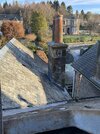 7BB41B3B-EAF3-4B0A-8BA3-BF294038DD8C.jpeg563.8 KB · Views: 93
7BB41B3B-EAF3-4B0A-8BA3-BF294038DD8C.jpeg563.8 KB · Views: 93 -
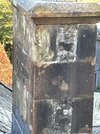 6E66B290-8C2B-4F48-B536-28941FC6089D.jpeg402.1 KB · Views: 94
6E66B290-8C2B-4F48-B536-28941FC6089D.jpeg402.1 KB · Views: 94 -
 6166EEAA-963E-40AF-BA0B-831896C91B36.jpeg381.9 KB · Views: 98
6166EEAA-963E-40AF-BA0B-831896C91B36.jpeg381.9 KB · Views: 98 -
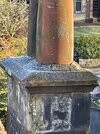 3983C81C-B355-43DB-AF9F-632F99A4036D.jpeg405.9 KB · Views: 88
3983C81C-B355-43DB-AF9F-632F99A4036D.jpeg405.9 KB · Views: 88 -
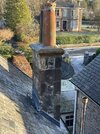 09C8EA17-E9D6-4CE2-848D-28E9315F2344.jpeg620 KB · Views: 98
09C8EA17-E9D6-4CE2-848D-28E9315F2344.jpeg620 KB · Views: 98 -
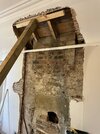 6131ABF1-8E99-4F1A-9921-DE39C2ADEB7C.jpeg420.2 KB · Views: 95
6131ABF1-8E99-4F1A-9921-DE39C2ADEB7C.jpeg420.2 KB · Views: 95 -
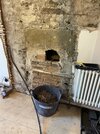 F92E8242-4C19-4971-92A6-9B4EB7047CB3.jpeg572.5 KB · Views: 79
F92E8242-4C19-4971-92A6-9B4EB7047CB3.jpeg572.5 KB · Views: 79
